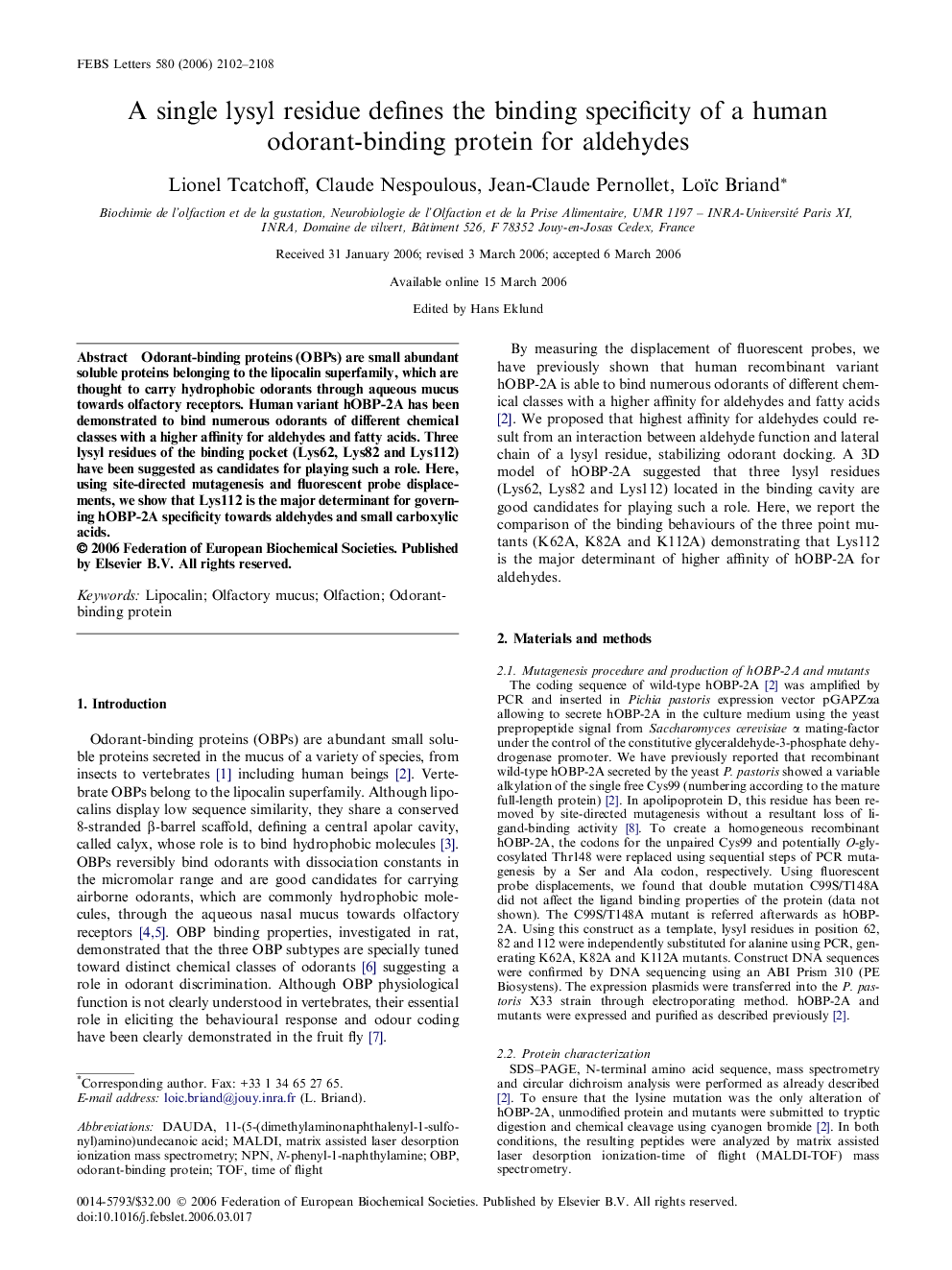| Article ID | Journal | Published Year | Pages | File Type |
|---|---|---|---|---|
| 2050835 | FEBS Letters | 2006 | 7 Pages |
Abstract
Odorant-binding proteins (OBPs) are small abundant soluble proteins belonging to the lipocalin superfamily, which are thought to carry hydrophobic odorants through aqueous mucus towards olfactory receptors. Human variant hOBP-2A has been demonstrated to bind numerous odorants of different chemical classes with a higher affinity for aldehydes and fatty acids. Three lysyl residues of the binding pocket (Lys62, Lys82 and Lys112) have been suggested as candidates for playing such a role. Here, using site-directed mutagenesis and fluorescent probe displacements, we show that Lys112 is the major determinant for governing hOBP-2A specificity towards aldehydes and small carboxylic acids.
Related Topics
Life Sciences
Agricultural and Biological Sciences
Plant Science
Authors
Lionel Tcatchoff, Claude Nespoulous, Jean-Claude Pernollet, Loïc Briand,
